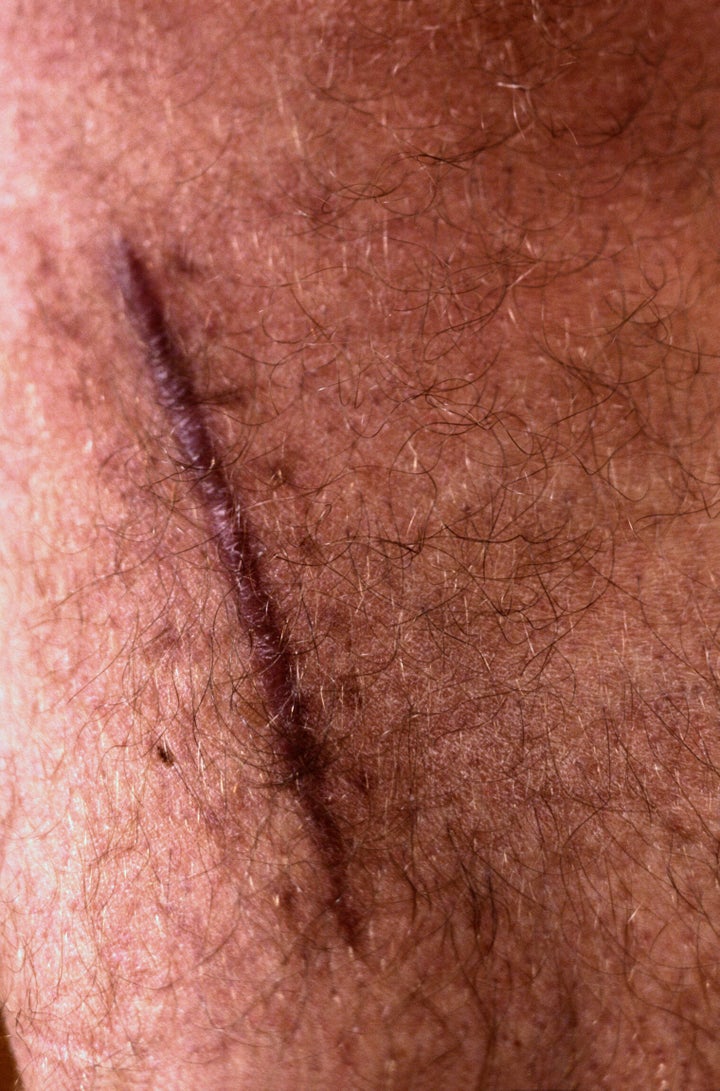
Scars and the process of scar formation is one of the most misunderstood concepts, as they create much confusion in my plastic surgery practice. On a daily basis, I must carefully explain the scarring process to my patients because once the skin is cut; some sort of scar must form. Many people assume that because I am a plastic surgeon, there will be no scars! In reality, plastic surgeons do their best to hide and minimize scars and camouflage them so they are not readily visualized.
Scars represent the final phase of the body's healing or repair process after the skin is damaged. Scarring occurs as a direct result of accidents, burns, surgery, skin conditions (acne for example), or any significant trauma to the skin. A procedure as benign as piercing the earlobe for placement of an earring can cause a deforming scar or keloid.
The scarring process is part of the wound healing mechanism in which our body utilizes to heal after injury to the skin. The initial phases of wound healing include control and cessation of bleeding and sealing the wound to prevent bacteria penetration and wound infection. Collagen, a naturally occurring protein in the body, is then used to actually repair and close the wound. Think of it as a type of human cement utilized by the body to fill a hole, the wound. Wounds that are sutured or stitched closed usually scar better than those that are left open to heal by secondary intention.
It takes over a year for a scar to "mature", or completely heal. Most new scars, called immature scars, appear red and angry during the first three months of formation, and this is a normal variant of the scar forming process. The problem is that everyone scars differently and no one can predict the quality of an individual's scar formation. The best scenario is a final scar that is as thin as a fine line, flat, matching the surrounding skin color and over time, becomes minimally perceptible. The opposite end of the spectrum is something called a keloid, which is basically an extremely thick scar, and can actually look like a piece of rope. Keloids are more common in darker pigmented skin, but can occur in any type of skin. A hypertrophic scar is thicker and more prominent than a normally matured scar, but not as thick as a keloid.
The treatment options for scars are varied. Early on, scars should be vigorously massaged with a moisturizer one or two times a day for about a minute. The active massage helps reorganize the immature collagen bundles forming during the repair of the injury. The moisturizer decreases the friction on the tender new scar while massaging and also moistens the region, as moisturizing glands are not yet functioning in a new scar. Popular choices include vitamin E oil or cocoa butter, but any over-the-counter moisturizer is just as effective. Immature scars should be protected from the sun, to prevent hyperpigmentation or becoming overly dark.
Coverage of scars with thin silicone gel sheeting has proven effective in minimizing hypertrophic or keloid scar formation. It is often used for difficult burn scars. The gel sheeting must be worn at all times during the maturation phase of scar formation.
Recently several over-the-counter scar treatment gels have been developed to optimize the scarring process. These products often include a topical steroid, silicone gel and a moisturizer. Individually, each of these ingredients has been proven to be effective for treating scars, and the combination of these ingredients found in scar gel products do improve the scar formation process in some patients.
Cortisone injections administered by physicians can be effective in the treatment of keloids or hypertrophic scars. A series of injections every six to eight weeks is usually necessary, and is more effective in the early stages of scar formation. Unfortunately, results vary significantly from person to person, and often injections alone are ineffective. Sometimes complications such as fat atrophy of the region can occur, causing a dent in the region of the scar.
Surgical excision of painful keloids is another option, usually in conjunction with steroid injections. Results vary significantly, and recurrence of the keloid is a possibility. Studies demonstrate improvement in 30 percent-50 percent of keloids treated in this fashion.
In extreme cases, such as recurrent painful keloids that have been nonresponsive to other regimens, low-dose radiation treatment after surgical excision has shown to be an effective treatment. This approach is somewhat controversial because of the questions of long-term complications from radiation. w
In some cases, laser treatments have proven to be effective in shaving down hypertrophic or keloid scars, but results vary. As laser technology improves, this form of therapy offers the most promising results.
In conclusion, scar formation after surgery or trauma to the skin is a fact of life that must be dealt with as it occurs. It is imperative to become proactive with regard to treatment of scars in the early phases to maximize their final appearance.